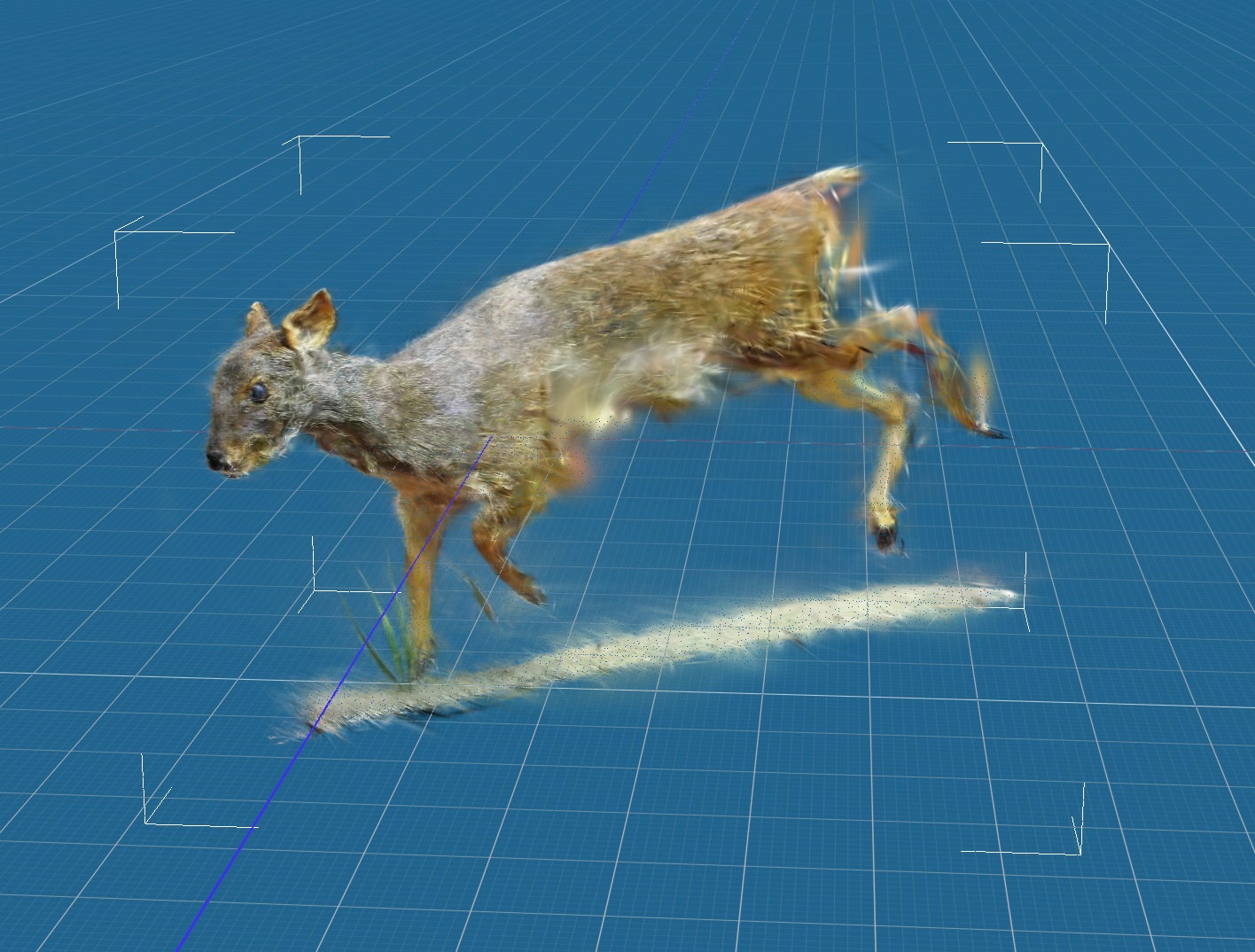The National Museum of Natural History, located in Santiago, is home to detailed and well-maintained taxidermy collections. At Boquila Foundation, we want to take advantage of this collection and advances in new technologies to generate better solutions for the conservation of the pudú and other species.
Digitizing the pudú
Thanks to advances in 3D technology, creating realistic models is now much easier. To digitize the stuffed pudú at the Museum, all we need to do is record a video from all possible angles, process this material, and generate a 3D model.
Utilization in conservation
By having a realistic and anatomically correct model of the pudú, we can use it to train new artificial intelligences that are useful in monitoring the pudú and processing images captured in traps. The more data we have, the better the quality of the AI. With this 3D model, we can generate synthetic data that improves the accuracy of our conservation tools.
Results: the 3D model
The pudú model is not yet finished, mainly because it still needs refinement in processing and improvements in the software tools we use. Once completed, the 3D model will have high quality. In the meantime, you can see a preview at this link.

